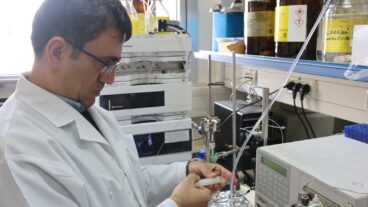At the end of three months, those receiving minocycline did four times better on the National Institutes of Health stroke scale, which measures vision, facial palsy, movement and speaking ability.In the wake of a stroke the most important thing is to get to the hospital fast. Experts agree there’s a short three-hour window for treatment, and anyone who manages to get help within this time is likely to prevent serious damage that can affect movement and speech, sometimes for the rest of their lives.
The problem, however, is that many people don’t even realize they are having a stroke and most only make it to a doctor about 12 hours later, long after the worst damage has been done.
Now an Israeli research team has discovered that an antibiotic used traditionally to treat severe acne and urinary tract infections, could open that treatment window up to 24 hours, allowing a much larger number of patients to receive this vital help.
The study, led by Dr. Yair Lampl, a senior lecturer and deputy head of the neurology department at the Wolfson Medical Center Sackler Faculty of Medicine, and Tel Aviv University, shows that taking minocycline within 24 hours after a stroke, will significantly reduce brain damage and physical impairment.
In the US about 750,000 strokes occur every year. It is the third leading cause of death, killing 160,000 American citizens a year, and the leading cause of adult disability.
A stroke or “brain attack” happens when a blood clot blocks an artery, or a blood vessel breaks, interrupting blood flow to an area of the brain. When this happens, brain cells begin to die and brain damage occurs. The damage depends on the area of the brain where the stroke occurs and can affect speech, movement and memory.
For those who experience a minor stroke, problems can be small, like a weakness in an arm of leg. For people who undergo a larger one, however, the results can be devastating – paralysis and loss of speech. Some people recover completely, but two-thirds of survivors are left with some type of disability.
In the Israeli research, published in the October 2 issue of, Neurology, the medical journal of the American Academy of Neurology, Lampl studied 152 men and women who suffered an acute ischemic stroke, the kind induced by clots that cut off blood flow to parts of the brain, but had arrived at hospital too late for the traditional clot-dissolving therapy – the current gold standard for stroke treatment.
Half of the group was given an oral dose of 200 milligrams of minocycline a day for five days, while the other half was given a placebo. Treatment started between six to 24 hours after the stroke. Patients who had already shown signs of recovery, had neurological disorders or infectious diseases requiring antibiotic therapy were excluded from the trial. Doctors and patients knew who had received the drug, but neurologists evaluating the patients did not. No serious side effects were noted.
“The improvement was apparent within a week of the stroke,” said Lampl in a statement. “This is exciting because many people who have had stroke cannot be treated if they don’t get to the hospital within three hours after symptoms start, which is the time frame for current available treatments.”
At the end of three months, those receiving minocycline did four times better on the National Institutes of Health stroke scale, which measures vision, facial palsy, movement and speaking ability.
The minocycline group received a score of 1.6, which indicates little or no disability, compared to a score of 6.5 for the placebo group, which indicates a high end of mild disability, the team said. Similar results were obtained on two other ratings scales.
“Statistically, there’s a pretty marked difference between the groups,” said Dr. Eric Smith, associate director of Acute Stroke Services at Massachusetts General Hospital in Boston in an article in The Washington Post . “Clinically, it is the difference between someone who looks almost normal compared to someone with more mild-to-moderate impairment due to stroke.”
Lampl said he believes the improvements shown by patients taking minocycline are due to its anti-inflammatory effect and its ability to protect brain cells from destruction, rather than its basic antibiotic effect.
If it goes well, “it will be probably one of the most used and effective treatments of ischemic stroke that we have,” said Dr. Argye Hillis, a professor of neurology at the Johns Hopkins University School of Medicine in Baltimore in Post article.
Minocycline, a tetracycline derivative has been used for years to fight bacterial infections. Over the past decade, the drug has been found in other studies to have a neuroprotective effect in a variety of other neurological conditions, including multiple sclerosis, Parkinson’s, Huntingdon’s and Lou Gehrig’s disease.
Lampl said he now plans to confirm the results of this trial in a larger double-blind clinical trial. Further research is also needed to discover whether the dosage of drug taken in the study is optimal, and whether IV dosage would have a more effective impact.![]()
Slashdot It!![]()













